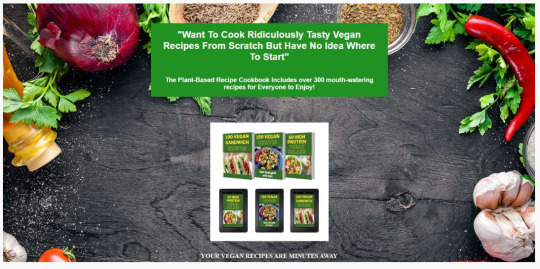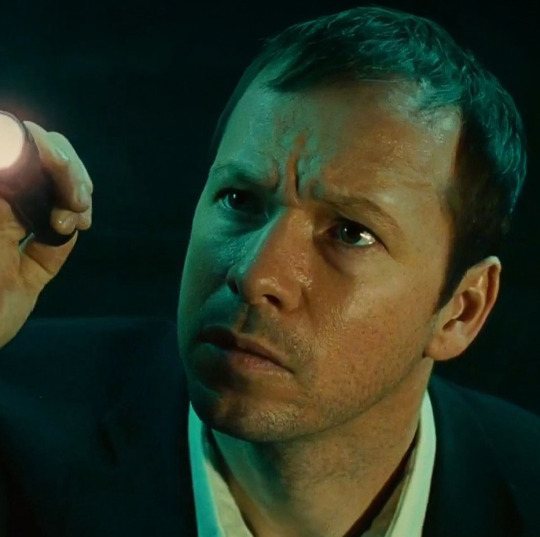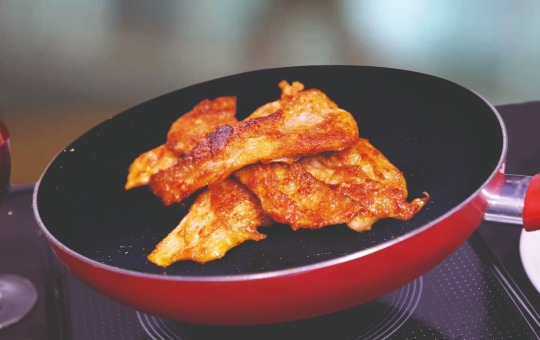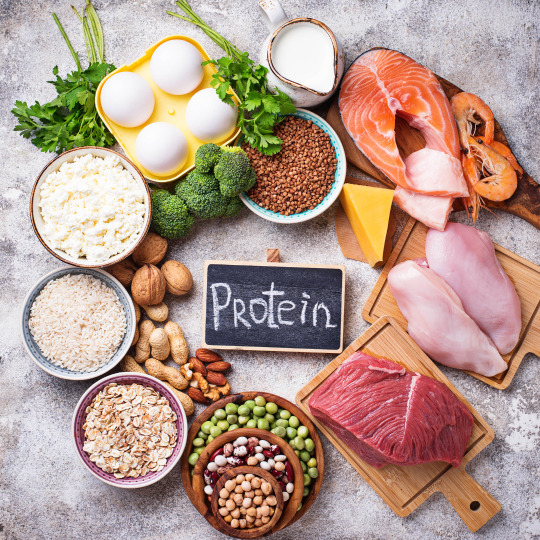#vegan body building protein
Photo

PRODUCT 1: 150 VEGAN RECIPES
150 Vegan Recipes Filled with colourful fresh fruit, nutrient-rich toppings, and full of natural goodness as beautiful as they are delicious!
To get the 300 Vegan/Plant Based Recipe Cook Book, click here
In this ebook of Vegan Cookbook, you’ll find colourful and easy to cook vegan recipes to support your healthy and happy plant-based lifestyle. With so many flavour combinations, there’s something for everyone! Have fun mixing it up!
To get the 300 Vegan/Plant Based Recipe Cook Book, click here
#plant base diet#vegan#vegan cookbook#vegan protein#vegan bodybuilder#healthy vegan meals#vegan grocery list#vegan fitness#easy vegan recipes#vegan body building protein#vegan breakfast recipes
1 note
·
View note
Text

Cookie Dough Blended Oats
#blended oats#oat#oats#breakfast#sweet#oatmeal#single serve#protein powder#chia#chia seeds#recipe#recipes#vegan#glutenfree#gluten free#food#vegetarian#chocolate chip#chocolate chips#body building#bodybuilding#body builder#bodybuilder#gains#gaining muscle#muscle#muscles#dairyfree#dairy free#bulking
44 notes
·
View notes
Note
wait, are the health claims from bone broth bogus? (genuine/good faith question). i’ve always heard that it’s high in collagen, which supposedly is good for you and better if you get it ‘naturally’ like from bone broth. is that another thing that’s not actually true, or wildly exaggerated?
Bone broth has been eaten for centuries in various cultures because it is easy to digest and believed to have healing properties. Chicken broth is highly valued by some as a remedy for the flu. In more recent years it has been promoted to help symptoms from psychiatric and neurodevelopmental disorders including autism and attention-deficit hyperactivity. [7] Claims that it detoxifies the liver, improves digestion, reverses wrinkles, builds bones, and relieves join pain have led some marketing analysts to predict that the bone broth market will approach $3 billion by 2024. [8] In reality, bone broth contains only small amounts of minerals naturally found in bone including calcium, magnesium, potassium, iron, phosphorus, sodium, and copper. The amount of protein, obtained from the gelatin, varies from 5-10 grams per cup. There is some concern that bone broth contains toxic metals like lead. One small study found that bone broth made from chicken bones contained three times the lead as chicken broth made with the meat only. [7] However the amount of lead in the bone broth per serving was still less than half the amount permitted by the Environmental Protection Agency in drinking water. A different study found that bone broth, both homemade and commercially produced, contained low levels (<5% RDA) of calcium and magnesium as well as heavy metals like lead and cadmium. [9] The study noted that various factors can affect the amount of protein and minerals extracted in bone broth: the amount of acidity, cooking time, cooking temperature, and type of animal bone used. Therefore it is likely that the nutritional value of bone broths will vary widely.
(Source: https://nutritionsource.hsph.harvard.edu/collagen/)
Your body makes collagen; eating collagen will put the things that make collagen into your body to make collagen with, but so will eating things that go into making collagen (amino acids, basically).
There's not good evidence that eating a ton of collagen or supplementing collagen improves your body's collagen production, and studies on collagen supplementation tend to be done by companies that make collagen supplements or produce expensive bone broth.
Basically if you're eating the 9 essential amino acids by consuming complete proteins (which can be done on any kind of diet, vegan or vegetarian or including meat - this is NOT one of those things your body relies on animal products to produce) your body is going to make collagen and it's going to have the amino acids handy to make collagen; consuming more collagen may mean that your body has more of those collagen-forming amino acids on hand, but it doesn't mean that your body is going to be any more efficient at producing collagen (and your body is going to become less efficient at producing collagen as you age).
But yeah bone broth health claims are primarily bogus. If you want more collagen in your diet for whatever reason, it's probably about as effective to eat jello as it is to eat bone broth but also more collagen in your diet likely isn't doing anything special.
1K notes
·
View notes
Text
I went down the internet rabbit hole trying to figure out wtf vegan cheese is made of and I found articles like this one speaking praises of new food tech startups creating vegan alternatives to cheese that Actually work like cheese in cooking so I was like huh that's neat and I looked up more stuff about 'precision fermentation' and. This is not good.
Basically these new biotech companies are pressuring governments to let them build a ton of new factories and pushing for governments to pay for them or to provide tax breaks and subsidies, and the factories are gonna cost hundreds of millions of dollars and require energy sources. Like, these things will have to be expensive and HUGE
I feel like I've just uncovered the tip of the "lab grown meat" iceberg. There are a bajillion of these companies (the one mentioned in the first article a $750 MILLION tech startup) that are trying to create "animal-free" animal products using biotech and want to build large factories to do it on a large scale
I'm trying to use google to find out about the energy requirements of such facilities and everything is really vague and hand-wavey about it like this article that's like "weeeeeell electricity can be produced using renewables" but it does take a lot of electricity, sugars, and human labor. Most of the claims about its sustainability appear to assume that we switch over to renewable electricity sources and/or use processes that don't fully exist yet.
I finally tracked down the source of some of the more radical claims about precision fermentation, and it comes from a think tank RethinkX that released a report claiming that the livestock industry will collapse by 2030, and be replaced by a system they're calling...
Food-as-Software, in which individual molecules engineered by scientists are uploaded to databases – molecular cookbooks that food engineers anywhere in the world can use to design products in the same way that software developers design apps.
I'm finding it hard to be excited about this for some odd reason
Where's the evidence for lower environmental impacts. That's literally what we're here for.
There will be an increase in the amount of electricity used in the new food system as the production facilities that underpin it rely on electricity to operate.
well that doesn't sound good.
This will, however, be offset by reductions in energy use elsewhere along the value chain. For example, since modern meat and dairy products will be produced in a sterile environment where the risk of contamination by pathogens is low, the need for refrigeration in storage and retail will decrease significantly.
Oh, so it will be better for the Earth because...we won't need to refrigerate. ????????
Oh Lord Jesus give me some numerical values.
Modern foods will be about 10 times more efficient than a cow at converting feed into end products because a cow needs energy via feed to maintain and build its body over time. Less feed consumed means less land required to grow it, which means less water is used and less waste is produced. The savings are dramatic – more than 10-25 times less feedstock, 10 times less water, five times less energy and 100 times less land.
There is nothing else in this report that I can find that provides evidence for a lower carbon footprint. Supposedly, an egg white protein produced through a similar process has been found to reduce environmental impacts, but mostly everything seems very speculative.
And crucially none of these estimations are taking into account the enormous cost and resource investment of constructing large factories that use this technology in the first place (existing use is mostly for pharmaceutical purposes)
It seems like there are more tech startups attempting to use this technology to create food than individual scientific papers investigating whether it's a good idea. Seriously, Google Scholar and JSTOR have almost nothing. The tech of the sort that RethinkX is describing barely exists.
Apparently Liberation Labs is planning to build the first large-scale precision fermentation facility in Richmond, Indiana come 2024 because of the presence of "a workforce experienced in manufacturing"
And I just looked up Richmond, Indiana and apparently, as of RIGHT NOW, the town is in the aftermath of a huge fire at a plastics recycling plant and is full of toxic debris containing asbestos and the air is full of toxic VOCs and hydrogen cyanide. ???????????? So that's how having a robust industrial sector is working out for them so far.
5K notes
·
View notes
Note
WIBTA for breaking up with my boyfriend because he likes my body?
TW for ED but please hear me out:
My bf (30m) and I (28f) have been together for a little over 5 years. When we got together I had an extremely stressful and physically demanding job. Shortly after our relationship started I relapsed with an eating disorder that had been a problem since prepubescence; I started restricting heavily at age 11 and had struggled with it on/off since then.
After quitting that terrible job and regaining some agency in my life, I spent a couple of years really focused on recovery. Without giving specific numbers (cause triggering) I'll say that I was extremely underweight to an unhealthy level for at least a year and experienced severe health complications because of it. I nearly died from heart problems and had a big wakeup call that caused me to change my whole life. I've done the work of recovery without medical help (history of omission with doctors) but have had support from my bf, and am currently at the highest weight of my life.
at a recent checkup my Dr talked a lot about "healthy lifestyle" and mentioned my weight gain over the past couple of years. I'm still within the "normal" range for my height and build, but the after visit summary/chart notes denoted risk of becoming overweight. Idk if my Dr would have brought it up if my history of ED was in my chart, (and I did switch primary care practices a few years ago, so they weren't treating me at my thinnest) but it still shook me a bit and I will admit to feeling very triggered.
The job I moved to is quite sedentary compared to the previous terrible one - I wfh, and very rarely have to be on my feet or do strenuous activity. In addition, I have chronic pain issues that make exercise difficult, and so historically have just restricted to maintain/lose weight because it's easier for me physically to just be hungry than to work out. I didn't want to go down that road again though because of how intense and scary it got last time.
My bf is a personal trainer and specializes in working with low ability clients and people recovering from long illness/injury. When I told him that I wanted to start exercising more often and get a good cardio routine going, he was really excited and started immediately putting together an "action plan" (what he calls it w his clients idk) for me. Then he mentioned how I'd need to add on a bunch of meal supplements and snacks to avoid losing weight and I got upset.
We're a plant-based (vegan) household and live with a roommate (bf's friend) so mostly eat/cook communal dinners and have various breakfast & lunch plans on hand, so we already eat pretty healthy and make sure to have a good balance of macro/micro in the meal plan. My intent was to eat the same but increase my activity level to get out of the danger zone without restricting. I don't generally snack and rarely eat dessert, just the 3 squares.
I told my bf that I needed to lose weight and be more active according to my doctor, and that I wasn't comfortable with having protein supplements, smoothies, and snacks in addition to regular meals because that would defeat the purpose. He got really sad and said that he likes the way my body is now, and while he supports being more active, he doesn't want the size of me to change. His exact words at some point were "you look so good now, I love the amount of you that there is and I like the way you jiggle." It kind of made me feel sick and wonder if he has like a secret size fetish or something?
So I've been thinking of breaking things off with him and moving in with a friend or back in with my parents, but idk if this is actually a red flag or just the disorder talking? He did help me a lot with recovery but if he's going to keep me from being healthy or wants me to gain even more weight then maybe it's better to leave - would this be an asshole move? I honestly don't know.
248 notes
·
View notes
Text
What each Saw character would get as a Tesco meal deal (scientifically accurate)

Hello everyone, I decided as my debut long Saw shitpost, I thought I would decide what meal deals different Saw characters would opt for if they stumbled into a Tesco and were a bit peckish after setting up a few traps.
If you’re not from the U.K. or Ireland and are not familiar with the British & Irish institutions of a meal deal, it’s basically a packaged sandwich, pasta pot, salad, bit of sushi maybe alongside a snack item and a drink for a fixed price (it used to be around £3/ €4 but the shops are taking the piss now). Meal deals are considered a treasured institution here and are an indication of your personality. People judge your character based on what you get between two slices of cheap bread.
Here’s what different Saw characters would get for a Tesco meal deal:

Adam (Faulkner) Stanheight
1. Southern fried chicken chipotle mayo sub
2. Doritos cheese flavour
3. Vimto still drink
Judging on how we know Adam is quite an unorganised adult struggling to adult most days, I would assume he opts for high energy foods to keep his tastebuds happy. Cheese, spiced chicken and fruity drinks seem up his street. Plus, Vimto is a very Mancunian thing and if Saw was set in the U.K., there’s no way Adam would not be from Manchester.

Dr Lawrence (Larry) Gordon
1. Eat Your Greens Feta Salad
2. Apple & Grape snack pot
3. Chilled Iced Latte
I feel like because Larry is a doctor, he prioritises convenience but also eats healthily. I also imagine him to be meat free/ vegetarian so that explains the feta & greens salad (I don’t think he’d be vegan though, he seems like he loves proper cheese too much). Larry seems like he’d always be carrying breath mints or tictacs to minimise the cheese or coffee breath- nobody needs a waft of that when being told they’ve got 6 months left to live.

Amanda Young
1. BLT sandwich
2. Walkers Thai Sweet Chilli Sensations Crisps
3. Monster Energy drink (chosen based on packaging colours to match mood)
Amanda is a busy lady planning traps and building contraptions designed to almost certainly kill people. She seems like she enjoys a bit of spice along with classic comfort combinations.

John Kramer
- Chicken & bacon sandwich
- Egg snack pot
- Green smoothie
John seems like he’s mindful of what he puts into his body considering he’s consistently a salt & vinegar crisp away from death with the cancer and all. He’s also a very smart man so he would know the best value for money combination with a meal deal is getting an overpriced fruit smoothie for a drink.

Mark Hoffman
- All Day Breakfast sandwich (triple)
- Walkers Max Salt & Vinegar crisps
- Red Bull
Mark seems like he can’t get enough of bacon & sausage, even though it’s cold and not exactly very fresh. Maybe he’d even have a bit of HP brown sauce with it. Mark would also probably make immature jibes towards vegans and vegetarians because he’s that kind of man. Considering Mark works overtime setting up traps and evading capture, all he’d be drinking by the events of Saw 7 would be energy drinks.

Jill Tuck
- Egg & Cress sandwich
- Arla strawberry protein yogurt
- Bottle of water
Jill is a bit… bland. I’m sorry but I just have to say it. Egg & cress perfectly summarises Jill’s personality as seen in movies 4-7 between two pieces of bread.

Peter Strahm
- Deli style cheese & pickle sandwich
- Smoked salmon sushi pack
- Pepsi Max
Strahm made some good decisions, some regrettable ones and one very very dumb decision during his time in the Saw universe. Just like his track record with making poor decisions, I’d guess Peter would get some supermarket sushi as a snack with his meal deal- not very fresh nor authentic and will leave you wondering why you couldn’t have got a pack of reliable crisps or a chocolate bar instead.

Lindsey Perez
- Feta & sundried tomato pasta
- Propercorn sweet & salty popcorn
- Fanta orange
Perez is a great character and so she would get a meal deal to reflect that. Why do I also imagine Lindsey being veggie?

Eric Matthews
- Meatball marinara sub
- Walkers Monster Munch Pickled Onion crisps
- Red Bull
I feel like this choice accurately reflects Eric. It’s a combination that’s maybe reflective of an immature palette, maybe even a sort of guilty pleasure combination. I wonder if he’d put the monster munch hands (or feet) on his fingers and eat them like that.
Hope you enjoyed my incredibly British saw shitpost x
#saw shitpost#saw 2004#saw edit#lawrence gordon#saw#adam stanheight#horror#chainshipping#sawposting#cary elwes#leigh whannell#shawnee smith#amanda young#john kramer#mark hoffman#lindsey perez#peter strahm#tesco#british shitposts#meal deals#sandwich#why the hell not
97 notes
·
View notes
Text
Worldbuilding
Made a new fantasy world in my spare time today, populated it with fantasy races.
Premise of the story: An elf chef who runs the best restaurant in the area gets his ingredients by diving into the local dungeon. His restaurant is the best not only because of his fantastic cooking skills and quality ingredients, but also because he can serve anybody that comes through his doors; each of the races has different dietary needs and finds different things poisonous, and he can cook for anyone.
One day, he's in the dungeon, and he falls down into a lower level nobody's been to in AGES. Thing is, though, there's a human living there, a biologist who's been studying the dungeon ecology for centuries, and the last human alive—all others were wiped out centuries ago due to a plague, and she's only alive because she's been living in the dungeon.
Main story arc is this guy trying to figure out not just what she can eat, but what she'd LIKE to eat, without killing her in the process.
Yes this is inspired by Dunmeshi. What of it.
Races are:
Humans (extinct)
Elves
Faunlings
Halflings
Orcs
Dwarves
Brounies
Gnomes
Elves
A camouflage species, their colors depend on the environment they're in. A snow elf would be pale white, a wood elf shades of green and brown, a dark elf (as in, lives underground) stone gray with jet black hair, and so on. Knife-point ears. Average height: 5'8"
Diet: Vegetarian, can't process meat at all, regardless of source.
Faunlings
Deer-like people, ranging visually from elves with horns to satyr-like. They're all one species, despite individual variation.
Diet: Opportunistic carnivores, they CAN eat meat, but mostly eat plants; can't process milk or most sugars past infancy. Average height: 4'10"
Halflings
NOT hobbits. They're small people, deathly pale and young-looking in their base form, with nub horns on their heads. Their appearance changes depending on who they live nearest, from their build to their coloration—a halfling living near wood elves might get taller and coppery with pointed ears, while a halfling near faunlings might have furrier legs, dappled shoulders, and longer horns, etc. Average height: varies wildly
Diet: Obligate ovivores, eat almost exclusively eggs when young and need lots of protein. Depending on who they live near, they'll eventually adapt to local cuisine and build up poison tolerance, but forcing that adaptation to go too quickly can send them into shock.
Orcs
Cat eyes and feline fangs, big and muscular. Like elves, they camouflage based on location, but they tend to be more colorful overall. Average height: 6'10"
Diet: Heavily meat-based diet, they eat most meat raw. Highly lactose intolerant, may occasionally eat plants, but can't process grains.
Dwarves
Short and stocky. Dark blueberry purple-blue by default, will temporarily turn pale on parts of their bodies that are exposed to light for a few hours. Sunlight sends them into temporary hibernation and petrification, making them statue-like. On cloudy days, they're lethargic, and on moonlit nights, their skin gets a little harder, with white patches depending on the strength of the moonlight. Average height: 3'9"
Diet: They have a tolerance for poisons that most races would die over, but they can't stand most acids. Citric acid in particular is poisonous to them. Cavern-based diet.
Brounies
THESE are the hobbits. Short and humanlike, with long, fur-tipped tails. Usually monochrome in color scheme, leaf-point ears. Average height: 3'2"
Diet: Can't process plant fibers properly, all plant matter must be cooked to break it down. Mostly raw pescatarian.
Gnomes
Even smaller than brounies, humanlike, with round-edged pointed ears and generally plump bodies. Average height: 2'4"
Diet: Vegan, with HIGH poison tolerance, they actually need some poisons to live. Mushrooms and fruit make up much more of their diet than leaves do.
106 notes
·
View notes
Note
So uh question as a follow up to your recent health posts. I have chronic health issues but was working to improve my health despite them. As of the beginning of this year I was vegan with a mostly whole foods diet, I exercised regularly, I never smoked, didn’t drink and severely limited my caffeine intake. Now I’m just hitting my second trimester of pregnancy and things have gone downhill. I have severe morning sickness (which lasts all day - it really needs a different name), haven’t been able to exercise since the nausea started and barely leave the house now out of fear of throwing up in front of people. I’m loosing weight and junk food is a new cornerstone of my diet as it’s often the only thing I can keep down. I’m really worried about how this is going to impact my health long term. I know this isn’t really your area but any tips on how to manage good health during a difficult pregnancy?
You have to eat. It's OK if the macronutrients you're getting right now (fat, carbs, protein) aren't rich in micronutrients. That's what supplementation is for. That's why your body builds up stores. Hyperemesis gravidarum (persistent vomiting in pregnancy) is one of the worst-studied phenomena in OB, an already under-researched field, and you do whatever you need to do to survive, even if that's Jell-O cups and rice pudding for three months. Don't worry about future you; future you won't be pregnant and won't have the "this is poison, barf it up" button pressed at all times for everything.
#the attending dr. kristophine#interestingly enough hyperemesis gravidarum research was what kicked off my career
59 notes
·
View notes
Text
if you're thinking of going to the gym to build a broader, muscular physique, here is a long post of random tips from a cis gym girlie!!!
disclaimer: these tips are from the experience of a cis femme queer woman who has been going to the gym for the past 5 years, and hyperfixates on weight training. i am in no way a certified personal trainer or dietician, and i do not have the knowledge to train with chronic pain or disabilities. i personally deal with some chronic pain and impinged joints that i have tips for, but that is not the purpose of this post! these tips are also more applicable for able-bodied cis women, and non-binary/genderfluid/bigender/gnc/trans folks with naturally lower levels of testosterone, who are beginners in weight training (0-12 months of going to the gym)
table of content:
know your goals
eat more protein
lift weights and progressively overload to build muscle
compound exercises is your bestie. isolation and isometric exercises are good company to keep
your diet determines 90% of your physique or wtv they say
you belong in the gym and don't let anyone tell you otherwise
it's common to have body dysmorphia, even at a level where you're jacked af. feel it, understand it, and be curious about where it is coming from
extra stuff
***
1. know your goals!
for the purpose of this post we are going to assume the goal is to gain serious muscle!
this means your workout will focus on either strength or mass
strength: heavy weight x low reps, means being able to carry the heaviest weight possible, at lower repetitions. think 60kg bench press at 4 reps
this builds immense strength, leaner size, and is the way strongmen/women and powerlifters train
that also means denser, stronger muscles, which will take a longer time to regress
mass: mid weights x mid reps, means carrying a challenging enough weight to go at higher repetitions. think 30kg bench press at 12 reps
this builds muscle mass and good strength, and is the way bodybuilders train
this is more time consuming than the first option, but goes hard on that beefy aesthetic
to build dense strong muscles, go for 3 sets, 3-5 reps per exercise
to build bigger muscles, go for 4-5 sets, 8-15 reps per exercise
please understand that muscles are heavier than fat. if you start weight training and notice your weight increase, but your physique stays the same/gets leaner, you're likely gaining a lot of muscle weight, which is a very good thing!
if you want a capped delts, fat biceps and wing lats, focus on upper body and core workouts
if you wanna get that peach booty, tree trunk thighs, and sculpted calves, focus on lower body and core workouts
if you want an 'X' taper, go for a full body workout
you can split your workouts by body parts (upper, core, back, legs), or by push and pull, to begin with
2. eat more protein!
depending on where you live and your available food options, you're likely not getting enough daily protein intake
when you lift weights, you tear your muscles (in a good way) so it can rebuild stronger for the next time you stress them out. protein helps you rebuild those 'damaged' muscles
it also keeps you satiated for longer - protein takes a longer time to digest
if you're vegan/vegetarian, opt for protein rich food like tofu, tempeh, soy products, legumes, chickpeas, etc.
if you struggle to eat enough protein, get protein powders to reach that daily intake
whey protein contains dairy. pea protein for vegans and lactose intolerant girlies
you can take protein powder with many types of food/liquids. i personally eat proats (mixing protein powder into cooked rolled oats) for breakfast.
aim for 0.8g - 1g per pound or 1.6g - 2.2g per kilo i.e. if you weigh 50kgs, aim for 110g daily protein intake for muscle growth
you don't need to eat your protein at like 30 mins before or after a session etc. as long as you have a consistent daily intake you're good
but! don't overload with protein in one sitting. space out your protein consumption throughout the day otherwise your body can't effectively absorb it all and it'll just go to waste
3. lift weights and progressively overload to build muscle
body weight exercises are good to start off, but if you want to build muscle, you need to start adding resistance to your training
that means periodically increasing the amount of weights you lift, to increase the challenge your muscle takes
being able to perform movements with heavier weights than before is also a good indicator that you're getting stronger!
if you're squatting body weight this week, try with 2kg dumbbells next week. then 5kg the next, 7kg the next, 10kg the next, and so on.
at a certain point it'll take longer to increase your weights. think taking 4 weeks to go from 100kg squats to 110kg
some bodies aren't able to tolerate higher weights (injury, chronic pain, genetic), so instead, add variations - instead of increasing to 20 push ups, try 10 push ups with your feet elevated
4. compound exercises is your bestie. isolation and isometric exercises are good company to keep
compound exercises work more than just one muscle group/one group of joints - these require multiple parts of your body to move in sync, to perform it correctly
compound movements are also functional movements. think being able to safely pick up a heavy box off the floor, storing your luggage in the overhead compartment, carrying your groceries in one go, carrying your wife to bed
deadlifts, squats, bench press, pull ups, overhead press, rows, push ups, lunges, and farmers carry are good basic compound movements to start with
once you're familiar with those, you can try variations like romanian deadlifts, sumo squats, chest press, chin ups, cable rows, push up plus, split squats to make it more challenging
isolation movements, such as bicep curls, knee extensions, crunches, etc. works mainly one muscle group/requires movement from one group of joints
for example, squats (compound) require you to move your hip joints and knee joints. knee extension (isolation) moves only knee joints. squats mainly work your glutes, quads, and core, while knee extensions mainly target your quads.
isolation movements are good for strengthening a specific muscle group, especially after an injury or specific weakness (isolation calf exercises to strengthen ankles), or for aesthetic purposes (fat biceps)
isometric exercises require you to contract your muscles without much movement. these are good for endurance and bracing.
planking is an isometric exercise. it's a very good exercise to stabilise your core, which is very good for injury prevention, and protects your spine from overextending
a strong, stable core is crucial to performing compound exercises and many daily movements safely
honestly muscle building is basically injury prevention if you do it right. you also get a strong physique, as a treat
keep your movements slow and controlled - focus on activating the muscle group that the exercise is intended for
quality movements = better muscle activation = efficient muscle growth
rushing through an exercise could result in injury, or compensating using the wrong muscle group or joints (ie. using your knees instead of your quads and glutes for squats)
5. your diet determines 90% of your physique or wtv they say
your muscles need protein to grow, and your body needs fuel to move. body fuel: carbs, fat, and protein
carbs are not your enemy!! fat is not your enemy!! not in excess!!
no food is bad or junk food. some foods are more nutritionally dense than others but at the end of the day, eating something diet culture deems 'unhealthy' is better than starving yourself
you can eat anything you want - the key is moderation
if you love sugary drinks, instead of drinking 5 cans of soda a day, drink only one (moderation)
if you love bread (like i do), have something else with that bread like tuna, peanut butter, lettuce, an egg, etc. (variety of nutrients)
if you love chips, have one serving a day, instead of the whole bag in one sitting
if you want to have visible muscles (read: abs) you need to go on a calorie deficit (cutting) - that means eating 200-500 less calories than your daily calorie need. you will likely loose strength and muscle mass
if you want to have strength and mass, and don't mind a bit of body fat, you can go for calorie surplus (bulking) - that means eating 200 - 500 more calories than your daily need
you can gain muscle and lose fat the same time
use this calculator to determine your calorie intake needs for cutting, maintaining, and bulking
you can also use the app 'calorie counter by fatsecret' (ios / android) to track your calories (but not too strictly! don't go down that slippery slope of obsessing over your every macro/micronutrient intake please!!!)
please remember that everyone's fat distribution is different - some people might not store much fat in their abdominal area, some might store more in their underarm area, etc. your genetics will determine where your body fat is distributed, which will affect your physique
emotional eating happens. cravings happen. binge eating happens. forgetting to eat happens. not feeling like eating happens. it's important not to associate guilt when it does - it's okay if you deviate from your usual eating routine. you can try again tomorrow
i've had a decent relationship with food my whole life, so i can't talk much about eating disorders or recovering from it, although you can watch leanbeefpatty's take on how to stop emotional eating, and her eating mentality (mostly intuitive eating) - she overcame ED in her youth
your body doesn't change much because you ate more/less than your target calorie intake for the day. changes in the body is gradual when it comes to body composition (fat distribution, muscle growth)
staying consistent is good. allowing yourself to deviate is also good. many of us aren't built to stick to something 100% all the time
most days can be 95%, some days 68%, some even at 23%. allow yourself those less than ideal days, so that you can go back to 95% most days. the key is going for as many 95% days possible, not a handful of 100%
6. you belong in the gym and don't let anyone tell you otherwise
you paid for the gym membership, just like everyone else. you have every right to be there, and use any and every equipment the gym provides
so what if you're starting with light weights? your starting weight is not your final weight
that means you also belong in the free weight/dumbbell section. take up space (respectfully) and don't be apologetic about it
don't be afraid to use the machines! they usually have instructions on the side. start off with the lowest weight, and go through the motion to familiarise yourself with it
it's okay if you don't know what you're doing at first - the gym is the place for you to figure it out
'what if they are looking at me' most people at the gym are busy focusing on themselves. they likely don't notice you most of the time
i would usually avoid eye contact, and look at either the floor, the ceiling, the wall, or the distance, so i don't notice if anyone is looking at me
if the gym is still intimidating, go with a friend! bring your headphones! drown out the world!
honestly i treat going to the gym as one large body double. having other people working out together helps keep me accountable to my own workouts. especially if my gym crush(es) is/are around
7. it's common to have body dysmorphia, even at a level where you're jacked af. feel it, understand it, and be curious about where it is coming from
i don't have any tips on managing body dysmorphia bc it is so personal and unique to each person
all i can talk about is what personally worked for me
which was focusing on getting stronger, instead of looking leaner
because when you get stronger, your body WILL change. the physique will come
but the physique that comes might not be what you'd expect - many times you've not seen how your body looks like when you get stronger
you might only see examples of strong bodies from media (who usually have really good genetics in the muscle building area), or other people at the gym
no two bodies are the exact same. if you dream of having xxx's physique, that isn't going to happen
but what you can dream of is having your strongest physique, which is unique to you, belongs to you, and will happen to you
remember, your ideal body type is the one you have now
you can set goals and have role models, but please please please do not make your role models your goal
i still struggle with bd, but it is much much better than before. i actually like looking at my body a large large majority of the time
for the femme girlies, if you want to get a muscular physique but are afraid of people calling you 'masc' or that you 'look like a man' fuck that noise. lift heavier, get jacked, become the muscle mommy your inner child would be proud of
8. extra stuff
if you're a cis woman or someone with naturally lower levels of testosterone, you won't get very, very muscular
you can get really strong (and with the right training, diet, and genetics, stronger than most cis men), but please don't compare your strength and size to someone who has higher levels of testosterone, naturally or through HRT or steroids
testosterone WILL help a person get very muscular and very strong, with lower levels of body fat. if you have lower levels of T, muscle size is limited, and body fat distribution is different. you likely store fat much easier too
please don't compare yourself with other folks with naturally lower levels of testosterone either - each person has different genetics, and some people are naturally stronger/bulkier than others, or have been lifting longer/more often
please don't be shy - look at the mirror when you work out and CHECK YOUR FORM. If your knees are buckling during your squats, you need to push them outwards or use lighter weights before you break your legs
if you have preexisting pain or are recovering from an injury, please get a personal trainer to help you create a custom training programme suited for your condition
if you experience acute pain while working out, stop what you're doing, ice it, see a physical therapist, and get that fixed. don't soldier on with the pain and make it worse. trust me!!
if you're just starting out, and have been experiencing common sedentary pains like lower back pain, take it easy, stretch, and get a personal trainer to build you a custom programme. im serious
always, ALWAYS warm up before a work out, and stretch after.
do dynamic warm ups before, and static stretching after
mind muscle connection is very important in weight training
focus on how your muscle is contracting and stretching, how your joints move, how everything comes together to help you balance and move something heavy around
i don't experience it personally, but i know many queer folks who are very disconnected with their bodies
i do not have any tips for that unfortunately
getting enough sleep is very important in building muscle - muscles recover and grow when you're sleeping/resting, not in the gym, not in the kitchen
again, the gym breaks down your muscles, the kitchen gives them the nutrients to rebuild, and the bedroom kick starts the actual process of recovery
remember that building muscle will take time. it doesn't happen overnight, nor does it happen in a week, a month, maybe even a year if you're inconsistent
it might take years to get to where you want to be. it's going to be a difficult journey, but it'll be worth it i think
show up, stay consistent, stay strong, and stay focused
but don't forget to rest and be kind to yourself - you don't need to push if you really can't do it
skipping one workout every once in a while, is a small blip in a lifetime of sessions.
a bad workout session doesn't determine the quality of all your workouts
truly once you start and see results, you will be amazed at what your body can achieve
a free resource that helped me kick start my fitness journey, and knowledge on weight training throughout the years, is nerdfitness. most recently leanbeefpatty for helpful tips, motivation, and entertainment
hope this helps someone in some way!
#muscular women#fitness#fitness tips#gym#buff women#muscular queer women#muscular enbies#buff enbies#gym girlies#strength training#weight training#physique#blows a kiss to the transmen not on hrt#this is for you too#eating disorder#food#diet#workouts#exercise#i tried to be as inclusive as i can re: gender/body/disabilities and i can still be wrong in the language i use but please be kind abt it!!
15 notes
·
View notes
Text

Healthy protein sources are essential for building and repairing tissues, supporting muscle growth, and maintaining overall health. Some examples of healthy protein sources include:
1. Lean Poultry: Skinless chicken breast and turkey breast are lean sources of protein that are low in saturated fat and high in essential nutrients like niacin and vitamin B6.
2. Fish: Fatty fish like salmon, mackerel, sardines, and trout are rich in omega-3 fatty acids, which are important for heart health and brain function. They are also excellent sources of high-quality protein.
3. Eggs: Eggs are a complete protein source, meaning they contain all nine essential amino acids that the body cannot produce on its own. They are also rich in vitamins, minerals, and antioxidants.
4. Greek Yogurt: Greek yogurt is higher in protein compared to regular yogurt and is a good source of probiotics, which support gut health. Choose plain, unsweetened Greek yogurt to avoid added sugars.
5. Legumes: Beans, lentils, chickpeas, and peas are plant-based sources of protein that are also rich in fiber, vitamins, and minerals. They are a great option for vegetarians and vegans.
6. Nuts and Seeds: Almonds, walnuts, chia seeds, flaxseeds, pumpkin seeds, and hemp seeds are good sources of plant-based protein, healthy fats, and essential nutrients.
7. Tofu and Tempeh: Tofu and tempeh are soy-based protein sources that are popular among vegetarians and vegans. They are versatile ingredients that can be used in a variety of dishes.
8. Lean Beef and Pork: Lean cuts of beef and pork, such as sirloin, tenderloin, and loin chops, are good sources of protein, iron, zinc, and B vitamins. Opt for lean cuts and trim excess fat.
Including a variety of these healthy protein sources in your diet can help you meet your daily protein needs and support overall health and well-being. Aim to incorporate a mix of animal and plant-based proteins to ensure you are getting a diverse range of nutrients.
#food for thought#food fight#comfort food#fast food#food photography#healthy food#foodie#food#foodpics#foodlover#foodmyheart#japanese food#healthy salad recipes#lunch recipes#pasta recipes#pasta recipe#salad recipes#soup recipe#recipe#reciprocity#recipies#recipes#cozy autumn#cozy fall#cozyhome#healhtylifestyle#healthy lunch ideas#healthy lunch#healthy diet#healthy
13 notes
·
View notes
Text

CHIA PROTEIN PUDDING
#protein powder#sweet#breakfast#dessert#desserts#pudding#chia#chia seeds#protein pudding#gluten free#glutenfree#bodybuilding#body building#bodybuilder#body builder#recipe#recipes#vegan#vegetarian#gym#gymlife#gym body#gymmotivation#gymrat#gymbabes#gym bros#fitspo#fitspiration#fitblr#exercise
31 notes
·
View notes
Text
Vegan protein sources
Proteins are made up of 20 amino acid building blocks. Eleven of these are called nonessential, meaning they can be made in your body.
The other nine are called essential, meaning they need to be obtained through the diet. Foods that contain all nine essential amino acids are called “complete proteins”, while foods that are lacking in one or more essential amino acids are “incomplete proteins”.
Some plant-based proteins are incomplete, but eating a variety of plant-based protein sources throughout the day will ensure that your body’s needs are met.
(Source - Colorado State University)
Complete vegan protein combinations:

9 notes
·
View notes
Text
The Ultimate Guide to Unveiling: Health Benefits of Veg Chicken
Introduction: Exploring the Wonders of Veg Chicken
Welcome to our comprehensive guide on the extraordinary health benefits of Veg Chicken! In a world where dietary preferences and health-conscious choices are becoming increasingly prevalent, veg chicken emerges as a delightful alternative that not only satisfies the palate but also offers a plethora of nutritional advantages.

Understanding Veg Chicken: A Nutritious Alternative
What Exactly is Veg Chicken?
Veg chicken, often referred to as plant-based chicken or meat alternatives, is a protein-rich substitute crafted from a blend of plant-derived ingredients. These innovative products mimic the taste, texture, and appearance of traditional chicken, providing a savory experience without the use of animal-derived components.
Nutritional Composition of Veg Chicken
Despite its meat-free nature, veg chicken boasts an impressive nutritional profile. Rich in plant-based proteins, essential vitamins, and minerals, this delectable alternative offers a wholesome dining experience without compromising on nutritional value. From soy and pea protein to vital nutrients like iron and B-vitamins, veg chicken serves as a commendable source of sustenance for individuals seeking a balanced diet.
Unveiling the Health Benefits of Veg Chicken
1. Protein Powerhouse
Protein serves as the building block of life, playing a crucial role in muscle repair, growth, and overall cellular function. Veg chicken, abundant in plant-based proteins, offers a fulfilling protein source suitable for vegetarians, vegans, and individuals looking to reduce their meat consumption. Incorporating veg chicken into your diet ensures adequate protein intake, supporting muscle development and enhancing satiety levels.
2. Heart Health Promotion
One of the most notable advantages of veg chicken lies in its potential to promote heart health. Unlike conventional meat products, which may contribute to elevated cholesterol levels and cardiovascular risks, veg chicken offers a heart-friendly alternative. Low in saturated fat and cholesterol-free, veg chicken aids in maintaining optimal blood lipid levels, reducing the likelihood of heart-related ailments and enhancing cardiovascular well-being.
3. Weight Management Support
In the pursuit of a healthy weight, dietary choices play a pivotal role. Veg chicken, with its low-calorie content and high protein density, emerges as a valuable ally in the battle against excess weight. By fostering feelings of fullness and satisfaction, veg chicken helps curb cravings and promotes portion control, facilitating weight management endeavors without sacrificing flavor or nutritional value.
4. Environmental Sustainability
Beyond individual health benefits, embracing veg chicken aligns with broader environmental sustainability efforts. Traditional livestock farming practices often exert a significant ecological footprint, contributing to deforestation, greenhouse gas emissions, and water pollution. In contrast, veg chicken production entails fewer environmental repercussions, making it a more eco-conscious choice for conscientious consumers striving to reduce their carbon footprint.
Incorporating Veg Chicken Into Your Culinary Repertoire
Creative Cooking Ideas
From savory stir-fries to succulent sandwiches, the versatility of veg chicken lends itself to a myriad of culinary creations. Experiment with diverse recipes and cooking techniques to unlock the full potential of this plant-based delicacy. Whether you’re grilling, sautéing, or baking, veg chicken serves as a canvas for culinary innovation, allowing you to craft wholesome meals that tantalize the taste buds and nourish the body.
Dietary Diversity Enhancement
Integrating veg chicken into your dietary regimen introduces a refreshing dimension of variety and flavor. Whether you’re a seasoned vegan or a curious omnivore, incorporating veg chicken into your meals diversifies your palate and broadens your culinary horizons. Embrace the culinary adventure and savor the delectable delights of veg chicken in all its forms, from classic favorites to bold, inventive dishes.
Conclusion: Embracing the Virtues of Veg Chicken
In conclusion, the health benefits of veg chicken are as diverse as they are remarkable. From its protein-packed prowess to its heart-healthy attributes and environmental sustainability, veg chicken embodies the epitome of nutritious innovation. By incorporating veg chicken into your dietary repertoire, you embark on a journey of culinary discovery and wellness enhancement, reaping the rewards of a plant-powered lifestyle.
11 notes
·
View notes
Text
Harnessing the Power of Calcium: Exploring Its Benefits and Plant-Based Sources
Calcium is an essential mineral that plays a vital role in maintaining overall health and well-being. While many associate calcium with dairy products, there are numerous plant-based sources that provide this crucial nutrient. In this blog post, we will delve into the benefits of calcium for the human body and explore some of the best plant-based sources to incorporate into your diet.
The Importance of Calcium:
Calcium is widely recognized for its role in building and maintaining strong bones and teeth. However, its benefits extend far beyond skeletal health. Calcium is also involved in muscle contractions, nerve function, blood clotting, and the regulation of enzyme activity. It is particularly crucial during childhood and adolescence when bones are growing, as well as during pregnancy and breastfeeding.
Additionally, adequate calcium intake throughout life may reduce the risk of developing osteoporosis, a condition characterized by weak and brittle bones. Furthermore, research suggests that calcium may play a role in managing blood pressure and reducing the risk of colorectal cancer.
Plant-Based Sources of Calcium:
For individuals who follow a plant-based or dairy-free diet, it's important to be aware of alternative sources of calcium. Here are some of the best plant-based sources to consider:
1. Leafy Greens:
Dark, leafy greens such as kale, collard greens, turnip greens, and spinach are excellent sources of calcium. These nutrient-packed vegetables not only offer calcium but also provide other essential vitamins and minerals.
2. Almonds:
Almonds are a versatile and nutritious snack that contains a considerable amount of calcium. Additionally, they offer healthy fats, protein, and fiber, making them a valuable addition to your diet.
3. Sesame Seeds:
Sesame seeds, commonly used in various cuisines, are a rich source of calcium. They can be sprinkled on salads, added to baked goods, or used in homemade granola for an extra calcium boost.
4. Tofu and Tempeh:
Tofu and tempeh, both derived from soybeans, are excellent plant-based sources of calcium. These versatile protein sources are widely used in vegetarian and vegan cooking and can be incorporated into a variety of dishes.
5. Fortified Plant-Based Milk Alternatives:
Many plant-based milk alternatives, such as almond milk, soy milk, and oat milk, are fortified with calcium to provide a comparable amount to dairy milk. Be sure to check the labels to ensure adequate calcium content.
6. Chia Seeds:
Chia seeds not only provide calcium but are also rich in omega-3 fatty acids, fiber, and antioxidants. They can be added to smoothies, oatmeal, or used as a topping for yogurt or salads.
7. Beans and Lentils:
Beans and lentils, including chickpeas, black beans, and lentils, are not only excellent sources of protein and fiber but also contain notable amounts of calcium. They can be incorporated into soups, stews, salads, or even used as a base for veggie burgers.
Calcium is an essential mineral that contributes to numerous functions within the human body. While dairy products are often associated with calcium, there are plenty of plant-based sources that can provide this vital nutrient. By incorporating leafy greens, almonds, sesame seeds, tofu, fortified plant-based milk alternatives, chia seeds, beans, and lentils into your diet, you can ensure an adequate calcium intake while enjoying a diverse and nutritious plant-based lifestyle. Remember to consult with a healthcare professional or registered dietitian for personalized guidance on meeting your calcium needs and maintaining optimal health.
For more detailed and comprehensive information, I recommend referring to reputable sources such as:
National Institutes of Health (NIH) - Office of Dietary Supplements:
Website: https://ods.od.nih.gov/factsheets/Calcium-Consumer/
Mayo Clinic:
Website: https://www.mayoclinic.org/drugs-supplements-calcium/art-20363792
Harvard T.H. Chan School of Public Health:
Nutrition Source - Calcium: https://www.hsph.harvard.edu/nutritionsource/calcium/
Vegetarian Resource Group:
Calcium in the Vegan Diet: https://www.vrg.org/nutrition/calcium.php
These sources provide evidence-based information on calcium, its importance in the human body, and plant-based sources of calcium.
Remember, it's always a good idea to consult with a healthcare professional or registered dietitian for personalized advice regarding your specific dietary needs and health concerns.
#food#vegan#foodie#healthy#health#vegetarian#fitness#diet#nutrition#plant based#calcium#vegan cooking#what vegans eat#bone health#plant strong#plant medicine#educate yourself#learnsomethingneweveryday#fortheloveofnutrition#vegetable#fitblr#fitspo#healthy eating#health food#healthier
37 notes
·
View notes
Text
A (long) Rant About Fitness & Personal Health

So if you're new to my blog, hi, Im Lyra and I am a 27 y/o who is very passionate about fitness and physical health. A few years back I was 165lbs and very unhappy, so I decided to start working out and then boom, currently 116lbs and 18% body fat. (Im 5ft2)
I didnt do that through some wacko diet, restricting my food, keto, whatever. No. Simply put, I ate food, and lifted heavy shit over, and over and over. And whoda thunk?! I lost body fat, gained muscle, as well as mental clarity, improved my sleep health, and physical health as a whole. And another fun fact, I still ate "bad food". Oooo, scary. Pizza, beer, burgers, cake, cookies, if its food, I want to eat it, and I did (and do).
It irks me on a cellular level that some people try to convince others that the only and or best way to lose weight, is to follow some weird ass diet that likely has more health risks than benefits, and the people theyre trying to convince, are already pretty vulnerable and are ready to try pretty much anything to get results and FAST!
Whilst I more than understand wanting results asap, fitness and physical health is not something you will see results and progress with in a short span of time. Sure, you might start feeling a little better after a month of implementing a fitness routine, but you'll look the same, and more or less still be the same. Fitness above all else teaches patience, and discipline. The muscles, slimmer figure, or whatever your original goal was is just a bonus.
Let me break a few things down for you;
Food is fuel, so fuckin EAT
You dont need to be keto, or follow the carnivore diet, vegetarian, vegan, nada. Nothing. Zilch. Zero, to be able to lose weight and gain muscle effectively, efficiently, safely, and be able to maintain a healthy body.
The best thing that I have ever heard regarding food (and it helped change my own relationship with food) is a quote from personal trainer and fitness coach Alex Tima from Hybrid Wellness. Alex said "There is no such thing as bad/unhealthy food. There is only more nutritious food, and less nutritious food".
Too much of anything isnt good, and too little of anything is also not good. Thats why we call it a "balanced" diet.
A lot of fitness influencers and whoever now days are trying to convince their followers to follow a strict diet of only animal products and maybe some fruit, all while eating one meal a day because "thats what our ancestors did!". Yeah, and our ancestors died at the ripe old age of 30.
True, we are/were hunter gatherers, but evolution is a thing as well. Just because back then we could survive off of only one meal a day, doesnt mean we have too now. More so, the biggest and strongest of our ancestors, still ate more/the most!
Bottom line, eat food when youre hungry. Eat good food. Meats, fruits, veggies, grains, fats, etc.
Dont let anyone tell you that youre undisciplined because you dont subscribe to any particular diet.
2. If You Wanna Look "Toned", You've Gotta Put in the Work
After becoming more fit and healthy myself, I have had quite a few people approach me and ask how they can do the same. However, nine times out of ten, they all say the same thing, or at least some variation of "I just wanna look more toned".
Well guess what? You will not look more toned, if there is nothing to tone.
Cardio alone will not help you achieve your goals. Sure, walking is fantastic and jogging is a great way to increase cardiovascular health and stamina, but it will not make you look more "toned". For that, you will need to build muscle. And how do we build muscle?
WE LIFT HEAVY SHIT
WE EAT LOTS OF PROTEIN
AND THEN WE LIFT HEAVIER SHIT
Unless you are literally training like Sam Sulek, you will not look like Sam Sulek. Lifting weights will NOT make you look "big" or "bulky" if you're not trying to become big or bulky. Just lift a good amount to where its a bit of a struggle, and increase the weight gradually overtime as you become stronger.
That with a little bit of cardio works wonders. Not just cardio or weights by themselves.
Again...balance
3. FUCK THE SCALE
Sooooo many people are obsessed with the scale, being skinny, having the smallest BMI they could possibly get but let me tell you something.
My own mother has been obsessed with not only her weight (shes an almond mom with the exception of booze), but mine for as long as I can remember. Shes done so many diets, taken god knows what concoctions of...whatever, pills, etc all for the sake of being skiiinniiiiiiiii!!!!!
Guess where she is now? I mean sure, shes super fuckin skinny, but shes got diareah 24/7, liver damage, blood problems, thyroid issues, she had fuckin scurvey, and various brain issues and pretty much, delusions. But so long as her weight is low along with her waistline, she does not give a fuuuuuckk.
Guys, its not worth it. Do NOT stress over the numbers you see on the scale or any BMI calculator. Its okay if you want to drop a few pounds, but I highly HIGHLY encourage you to just simply take progress pics instead. Your eyes may lie to you, but the camera will not.
I could go on and on and on about this topic, but this is already a long enough post, and I don't want to info overload you lol.
To wrap up, fitness and personal health is all about balance. Nothing more, nothing less. Balanced diet, balanced sleep, balanced workout plan, etc.
If you have any questions whatsoever, please feel more than free to drop into my asks! Ill be more than happy to answer them when I can :)
#blog#that girl#becoming that girl#girl blogging#fitness#fitblr#gymlife#gymmotivation#gym aesthetic#ask me anything#rant post
6 notes
·
View notes
Text
What is protein & Why do you need it in your diet?
When it comes to becoming a Fit Girl, adding protein to your diet is essential. 🍳 Protein helps keep you feeling full for longer, which can help you resist unhealthy snacks or overeating. Protein also helps you build muscle and keeps your energy levels up during workouts.
Protein is an important nutrient that helps our bodies function at their best. It’s in every cell of our body and helps build and repair muscles, bones, skin, hair👱♀️, and other tissues.
It also helps produce hormones and enzymes that regulate how we process food and the energy we get from it.

Protein is especially important for young women who want to become or stay fit. Fitness goals like building muscle💪🏽, losing fat, gaining endurance, and maintaining a healthy weight require an adequate protein intake. You will see results much quicker that way.
It’s important to get enough—but not too much—protein in your diet. Eating large amounts of high-protein foods can lead to health issues over time, such as digestion problems.
How much protein to take then? It's the million dollar question💸 in fitness and health circles. Personally, I have found that 0.8–1g of protein per kilogram of body weight each day works for me. I see results from exercise and nutrition, and my digestion is fine. However, many sources recommend 0.8–1g per lbs of body weight per day or even more.
Because recommendations vary wildly (many scientific studies recommending a higher intake are funded by or connected to protein supplement manufacturers), I suggest tracking your protein intake for a few weeks and checking if you are seeing your desired results.✔️ If not, try upping your protein intake.

Eating a variety of high-quality proteins, like lean poultry🍗 and fish, eggs🥚, beans, nuts, legumes and dairy products can help you get the right amount of protein. If you’re having trouble reaching your goals with food alone, consider adding a protein supplement🥛 to your diet. These are available for vegetarians and vegans too.
By incorporating the right amount of protein into your diet, you can reach your fitness goals and stay healthy at the same time✨. So don’t forget about this important nutrient when you’re planning your fit girl meals and snacks. Your body will thank you.
Good luck!
Did you find this post useful? Please reblog it.
Check out my other Fit Girl guides.
#protein#nutrition#green juice girl#that girl#it girl#pink pilates princess#clean girl#health and wellness#healthy#healthy living#healthy weight loss#health#healthy tips#healthy diet#healthy lifestyle#healthy life tips#levelup#leveling up#level up journey#weightlosstips#lose weight#dream body#dream girl#self improvement#wellnes journey#health journey#healthy habits#healthblr#fitblr#weight loss
45 notes
·
View notes